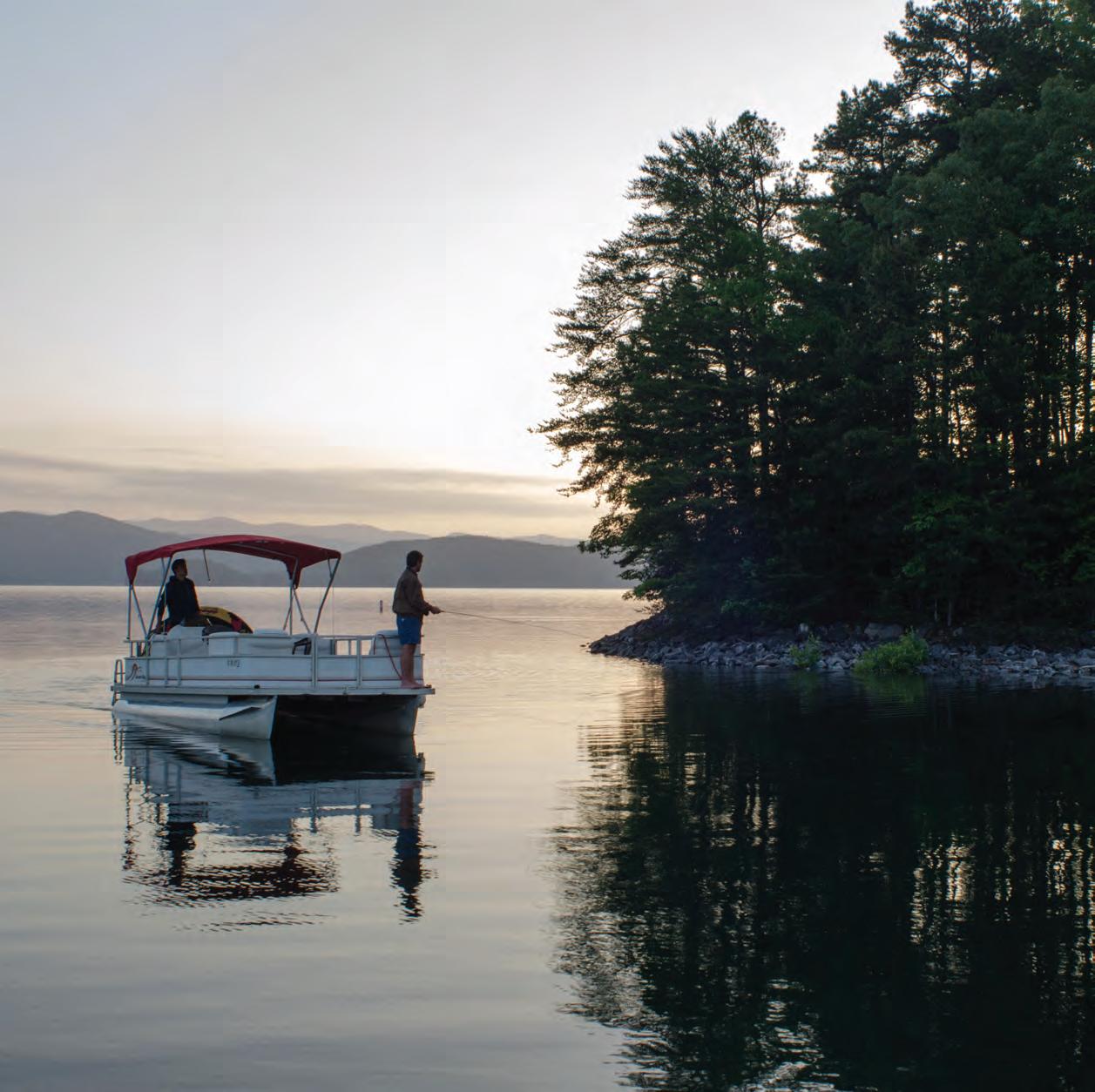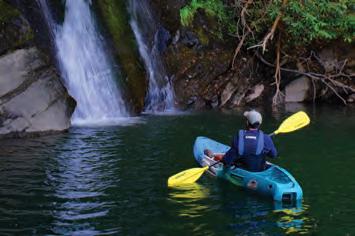


































When traveling the globe, my friend Cynthia has a term for that slightly delirious, unmoored feeling of jumping time zones and not being sure what hour it is: “It’s a million o’clock.”
I found myself in such a situation this past summer while changing planes in Jakarta. My phone had run out of juice, and I’d somehow managed to pack my phone charger in my checked bag. I had a long layover and might have missed my flight entirely if it weren’t for my In the Nick of Time Watch. This sturdy chronograph has a precision movement that oscillates an incredible 32,768 times per second. With a 24-hour dial, 60-second dial, 60-minute dial and a date window, this timekeeper will help you stay on top of whatever your travels throw at you.
“This is an incredible piece that blends a classic look with some of today’s finest watch mechanics,” says George Thomas, one of the world’s most renowned watch historians. “Offering a watch of this caliber for only $59 is unheard of.”
Act quickly! Because this offer is such a steal of a deal, we can only offer 827 at this price for this ad only! If it doesn’t meet your every expectation, simply return it for a full refund, no questions asked.
Watch Specifications:
• Precision chronograph movement

• 24-hour dial, 60-second dial, 60-minute dial and date window
• Water-resistant to 3 ATM
• Genuine leather band. Fits wrists up to 8"


In the Nick of Time Watch (Cream)
$299 $59* + S&P Save $240

*Special price only for customers using the offer code.
Your

“This is a beautiful watch and it keeps the time perfectly ... Highly recommended.”

 — Daniel J., Antioch, IL
— Daniel J., Antioch, IL















Motor your way to the sh at up to 17 mph with just a 6hp motor! Spend all day on the water traversing 70 miles with just 3 gallons of gas! Fish skinny backwaters or open bays and inland shores. This unique catamaran kayak will get you to the shing spots others can’t. Fast, stable, and ready in minutes.


Shown with a Honda® 5. 7 More Packages available!



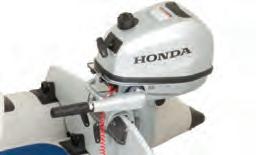
SeaEagle.com












•14’4” x 48” In ated
•36” x 21” x 12” De ated
•55 lbs. Hull Weight

•79 lbs. with 2 Seats and Transom


•1-2 Person/855 lbs. Weight Capacity
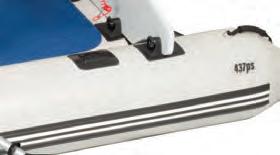

•In ates in just 10 minutes!
GET
Center cockpit oor rides 4” above the waterline, greatly reducing drag and getting you to the sh faster!
800-944-7496 for a FREE catalog
Dept. CS053B





pring is one of my favorite seasons for shing. Fish are warming up and feeding aggressively, especially red sh. Red sh eagerly consume an array of baits this time of year, but there is one arti cial that sets itself apart from the others. Have you guessed it?


If you said, “gold spoon,” you were correct. When you look at the spoon it seems unimpressive, to be honest. However, that is the beauty of it all; we, as anglers, overcomplicate shing. Sometimes all you need is an awkward piece of gold metal to shake the skunk.


WHAT
It combines pro le, color and vibration, which play on the three signi cant senses most game sh use when feeding. e shape might resemble a crab, a small sh or a wounded shrimp, and the unique wobble lets sh know it’s an easy target. Gold spoons are great for beginners and avid anglers alike, they can be rigged weedless, and they are easy to cast. One of my go-to spoons for red sh is the FishLab Bio-Spoon.
RIGGING A SPOON
Rigging is simple; attach a 20- to 30-pound uorocarbon or mono lament leader directly to the spoon. I attach a snap swivel directly to the spoon to prevent line twists. A 1/4-ounce spoon is usually an excellent choice, especially when the bait is smaller. Remember to match the hatch in

terms of size. Pair the spoon with a 7 or 7 1/2-foot medium fast spinning rod and 15-pound braid. My preferred setup is the Okuma ITX 4000 paired with an Okuma SRT spinning rod.
Spoons can produce sh in various conditions, but there are situations when it shines. Along weed lines, mangroves or similar structures should be your rst targets, as this is where red sh congregate. Remember, reds travel in groups, so work an area thoroughly for consistent action. Repeated casts to the exact location or the same retrieval path will o en produce multiple sh.
Gold spoons are best suited for stained or dark water. In cleaner water, the same techniques can be used with a silver spoon. e shape of the spoon and hook guard combine to allow the lure to bounce o obstructions like weeds, mangroves, oyster beds or rocks where other lures might be lost.
Erratic action is the key to the spoon’s success. Many anglers cast and pause, allowing the spoon to utter. If you do not get a hit right o the bat, you have two options for the retrieve. A steady retrieve, varying speed based on conditions, will o en draw sh out and even right to the boat. Others prefer to add a twitch to their retrieve, feeling it increases the motion. Try each or mix it up based on what the sh respond to. Be bold, and try new techniques. Be sure to pick up a Salty Scales Performance shing shirt, stay protected, and remain comfortable on the water.
Capt. Joshua Taylor is a Tampa guide and founder of Salty Scales Performance Fishing Gear. Check them out at www.saltyscales.com. MAKES THE GOLD SPOON UNIQUE? HOW TO FISH A SPOON By Capt. Joshua Taylor

There was a time in my life that we took certain things for granted. For example, No limits and/or seasons on speckled trout, drum, ounder and especially GROUPER! I never thought I would say the two words “grouper” and “season” in the same sentence. Never mind, I’m just venting because I prefer bottom shing and light lining above all other styles of o shore shing.
I went through this last year about this time, but I’ll do it again for those folks who might have missed it. is is the way I start every location we anchor on, or post up with the Rhodan.
NOTE: We take two boxes of quid on every trip, and we typically have live pin sh from the marina also.
I typically have three or four folks with me every trip. We start by ring down whole squid on the jig. Meanwhile, I’m on the sabiki jigging up whatever is on the bottom below us. I don’t care what is coming up on the whole squid, as this is not the main focus. e real objective is to set a nice ‘chum slick” on the bottom to attract the sh you’re really shing for. A er 4 or 5 rounds of the whole frozen squid, we will re down live pin sh or whatever I’ve jigged up on the sabiki. e other advantage of shing a live pin sh, grass grunt, sailors’ choice or whatever you can jig up, is it eliminates the trash bites. In addition to eliminating the trash bites from small snapper, seabass and other “undesirables,” it’s like physcological warfare, as the gags, scamps and reds cannot digest all that is going on here. To them it appears like the pin sh, grass grunts etc, think the live baits were running around picking up squid pieces, and the squid or crab jigs have caught them and the live bait is struggling to get away. BAM!!! e bite happens. is, my friends, is the di erence between “bottom shing” and GROUPER shing.
Another bait that’s a dead ringer for a grouper bite is a butter ied
bait. e butter ied bait on the bottom basically does the same thing as the squid. e small snapper and other smaller sh will hammer the lets until the grouper have had enough of it. You will feel the small sh biting it constantly, but then all of a sudden the small “pecking” bites will stop. Get ready, and don’t move it… the grouper has moved in and everyone else has to leave, because it’s time for the real bite!
Enough about the bottom. I will occasionally troll for a LITTLE WHILE, but this would be to accomplish two things at once. Catch a sh or two, but also to locate the best part of any given ledge with lots of bait and sh on the bottom. As soon as we locate the bait, reel in the troll baits and get to work! Everything you catch trolling, you can catch on the light line while you’re grouper shing. Tuna, dolphin and wahoo are idiots for a big fat (live) greenie, sardine, cigar minnow or goggle eye out back behind the boat in the current.
All the best shing,
Check out more from Tim Barefoot at barefootcatsandtackle.com



It was a perfect late autumn day in the northern Rockies. Not a cloud in the sky, and just enough cool in the air to stir up nostalgic memories of my trip into the backwoods. is year, though, was di erent. I was going it solo. My two buddies, pleading work responsibilities, backed out at the last minute. So, armed with my trusty knife, I set out for adventure.
Well, what I found was a whole lot of trouble. As in 8 feet and 800-pounds of trouble in the form of a grizzly bear. Seems this grumpy fella was out looking for some adventure too. Mr. Grizzly saw me, stood up to his entire 8 feet of ferocity and let out a roar that made my blood turn to ice and my hair stand up. Unsnapping my leather sheath, I felt for my hefty, trusty knife and felt emboldened. I then showed the massive grizzly over 6 inches of 420 surgical grade stainless steel, raised my hands and yelled, “Whoa bear! Whoa bear!” I must have made my point, as he gave me an almost admiring grunt before turning tail and heading back into the woods.

But we don’t stop there. While supplies last, we’ll include a pair of $99 8x21 power compact binoculars FREE when you purchase the Grizzly Hunting Knife. Make sure to act quickly. The Grizzly Hunting Knife has been such a hit that we’re having trouble keeping it in stock. Our first release of more than 1,200 SOLD OUT in TWO DAYS! After months of waiting on our artisans, we've finally gotten some knives back in stock. Only 1,337 are available at this price, and half of them have already sold!

Knife Speci cations:
• Stick tang 420 surgical stainless steel blade; 7 ¼" blade; 12" overall
• Hand carved natural brown and yellow bone handle
• Brass hand guard, spacers and end cap
• FREE genuine tooled leather sheath included (a $49 value!)
I was pretty shaken, but otherwise ne. Once the adrenaline high subsided, I decided I had some work to do back home too. at was more than enough adventure for one day.
Our Grizzly Hunting Knife pays tribute to the call of the wild. Featuring stick-tang construction, you can feel con dent in the strength and durability of this knife. And the hand carved, natural bone handle ensures you won’t lose your grip even in the most dire of circumstances. I also made certain to give it a great price. After all, you should be able to get your point across without getting stuck with a high price.
The Grizzly Hunting Knife $249 $79* + S&P Save $170

California residents please call 1-800-333-2045 regarding Proposition 65 regulations before purchasing this product.
*Special price only for customers using the offer code.
1-800-333-2045
Your Insider Offer Code: GHK257-02
species that crosses their path.
It is a good time to be a river angler. Here are three excellent destinations for river-run striped bass in the South.
• Saluda River: Columbia, South Carolina
In spring and summer, scads of striped bass make the 60-mile run up the Congaree River from the Santee-Cooper Lakes southeast of Columbia, S.C. By late summer, most of those sh pile into the Saluda River, which is a short, 10-mile-long tributary that’s fed with cold water from the dam at Lake Murray. August is the heart of the Saluda season, when 100- sh days of 2- to 5-pound stripers are possible. Fish heavier than 20 pounds are a possibility, but this shery sees a lot of pressure and the water is normally very clear. e big ones spook easily and become nicky late in the season.
• Etowah River: Cartersville, Georgia
On Georgia’s Etowah River, the sh are spread out over about 50 miles of river, so covering water is the name of the game. Anglers should expect to do a lot of casting to each shoal and piece of wood cover where stripers might lie in ambush.
Starting in April, they run some 75 miles upriver from Alabama’s Lake Weiss to a lowhead dam downstream of Georgia’s Lake Allatoona. e sh are constantly on the move and the idea is to intercept them. Anglers might hook up with sh from 4 pounds on up to 20 pounds and larger.
• Hiwassee River: Reliance, Tennessee
e Hiwassee is more of a quality than quantity shery. Anglers are called on to sh hard for just a few bites, but those bites come from sh that o en weigh 20, 30, even 40 pounds or more.
In the South, the striped bass runs of spring and summer bring some of the most exciting shing of the year for those who prefer to sh rivers. Landlocked striped bass are as large and powerful as any sh in freshwater, and for most of the year they are only available to big-lake anglers who troll or downline live baits.
at all changes in spring. e rst groups of striper migrate into the rivers on spawning runs. In many locations, this spring run is followed by a larger summertime push, when pods of striped bass move up into cooler, more oxygenated waters. Sometimes they pile up below dams, and sometimes they patrol surprisingly skinny waters in wolf packs, gobbling up any prey
Most years, the wide, shoal-broken river around Reliance loads up with striped bass from July into September. ese are big-river sh that run some 50-miles upstream from the Tennessee River at Lake Chickamauga. ey revel in cold, oxygenated water that ows down the mountains from Apalachia Lake on the North Carolina/Tennessee border.
ey hold in the same holes and shoals every year to feed heavily on skipjack herring, gizzard shad and the stocked trout Tennessee puts in the river for anglers.
For more information, go to coastalanglermagazine.com.
If your device has an LCD that has faded over time, or want to inquire about possible repair options for your unit, give us a call or visit our website!


















Mastry Engine Center has received the Suzuki Marine Super Service Award and has been ranked #1 in Suzuki Marine US Sales!

Repower packages designed to best fit your needs and not stretch your budget. Financing available.





All Suzuki repowers come with the new Suzuki 5-year factory warranty.


Up your game like never before with the biggest and brightest TZtouchXL MFDs.




 By Emily Rose Hanzlik
By Emily Rose Hanzlik

With spring settled in, the seas are becoming more shable, and more options are available. When I was little, this is the time of year when we would start catching little tunnies o the pier. At the time they were my favorite, but now that I’m older and know a few friends with boats, spring has come to mean tuna, black n tuna in particular. We catch other species of tuna, but black ns are the most abundant here o Florida.
Black n tuna are smaller than other tuna species like yellow n or blue n. Black ns we catch usually weigh between 10 and 30 pounds, and they rarely reach 30 pounds. Yellow n tuna have bright yellow on their lateral line, while black ns have a bronze, almost black line. Also, a black n’s nlets are more of a dark bronze color with white tips compared to yellow n, which have yellow nlets. Another tell is their second dorsal n, which is not elongated like other species of tunas.
Black n tuna and every other tuna use ram ventilation, meaning they must be constantly moving. During this movement, water is forced through the mouth and over the gills to supply oxygen to the blood. ey are constantly moving and highly migratory.

Black n tuna range all over the western Atlantic Ocean, from Massachusetts to Brazil. Within these areas, tuna stay more o shore in depths of 70 feet or deeper. ey prefer water temperatures between 70 and 75 degrees. is results in the tuna arriving in Florida in late spring and staying into fall, when water temperatures are optimal for them.
Black ns spawn throughout the summer. ey broadcast spawn in current, and their fry will live within oating debris elds until they get large enough to survive in the open.
To catch black n tuna, many captains will dri sh over 170 to 270 feet of water. A current that dri s the boat at about 2 knots is about as fast as you want to go, and a sea anchor can be useful in slowing the dri . Live baits such as sardines, thread n herring and others work well on the dri . Deploy some freelines as well as some weighted rigs to take baits down and cover the water column.

Jigging a spoon around reefs and rock piles is another fun and e ective way to catch black ns. Tuna will readily take a 4- or 5-inch spoon weighing 2 or 3 ounces.
Black n tuna are good to eat, and you’re allowed two per person or 10 per vessel. e IGFA all-tackle record for black n tuna is 49.06 pounds, caught out o Marathon, Fla. in 2006.







Emily Rose Hanzlik holds 62 IGFA world records in various categories. She hails from West Palm Beach, where she has a part time Bow n Guide Service as well as shing classes for Jr. Anglers. Find her on social media @emilyhanzlikoutdoors.





Why are More Professional Mariners Choosing Mastry Suzuki RePower - Power, Reliable, Durable & Best Value







When Considering A Repower, Consider These Factors:

• Mastry Suzuki RePower Centers have decades of repower experience providing proper rigging, controls, propeller matching and in water testing



• With a Mastry Suzuki RePower, owners gain improved performance, less noise and greater reliability















• Options that will fit most any budget, financing available




• Mastry Suzuki RePower’s exclusive Owner’s Edge Program*
• All Suzuki RePowers come with Suzuki’s 5-years of protection


With 13 Locations Across Florida There is a Mastry Suzuki RePower Center Near You






*Get with the Program!
When you purchase a new Suzuki outboard from an authorized Mastry RePower Center you qualify to become a member of the Mastry Suzuki Owner’s Edge. Owners receive an identification card that provides them with important information about their Suzuki outboard motor as well as a passport to additional benefits during ownership. Members enjoy a detailed engine maintenance schedule, Mastry Suzuki RePower Trade Program and special pricing from Mastry Suzuki Partners.

















It’s been a slow year for truly giant largemouth bass in Florida. e FWC’s TrophyCatch program, which recognizes and promotes catch and release of big bass, has only registered two 13-plus-pounders this TrophyCatch season. Both sh were caught southeast of Gainesville, at Orange Lake.



Largemouths must weigh more than 13 pounds to

reach TrophyCatch Hall of Fame status. TrophyCatch season 11 began back on Oct. 1, 2022, and the veri ed Hall of Fame bass wasn’t caught until Feb. 3. at monster sh, caught at Orange Lake by Michael Matthews, weighed 13-pounds, 8-ounces. It is the largest sh entered into the program so far for the season, which ends on Sept. 30, 2023.
Apparently, Orange Lake bass were fat and full of eggs in February. e second Hall of Fame bass of the season was caught on Feb. 25 by Anthony Holland during a Big Bend Bass Club tournament at Orange Lake. You can bet Holland got a check a er bringing his giant 13-pound, 3-ounce bass to the scales.
Both Hall of Fame sh were released back into Orange Lake, and both of their weights will count for Orange Lake in the ongoing Battle of the Lakes between Orange Lake and Headwaters/Fellsmere. At the end of season 11, whichever shery has the most registered weight will win, and all the anglers who submitted sh for the winning lake will be entered into a prize drawing.

TrophyCatch also awards many other prizes to participants, including a fully rigged bass boat that will be awarded by drawing at the end of the season.


For more information, visit trophycatch













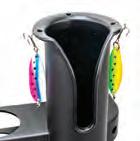
















Just a er daybreak, we bobbed in an anchored ski looking out over a wide, shallow bay. Capt. Scott Burgess sat on the poling platform smoking a cigar and drinking co ee. Jesse Trevathan stood on the casting deck. He wasn’t casting. With line stripped out into the decal-littered stripping bucket in front of him, he held his y—a locally tied (FC)2 Renegade—in his le hand and his rod in his right. He just watched. We all watched, eyes focused on a large patch of sand o the bow that stood out from the grassy bottom around it.
We were looking for tarpon cruising the shallows on their annual westward migration along the Gulf Coast. In this sweet spot on Florida’s Forgotten Coast, they show up in May and are gone by August. e action peaks in June and July, and their massive silver bodies would show clearly in contrast to the sandy bottom.
“ ey follow paths, the same paths, year a er year,” said Burgess. “It’s based on the topography of the bottom as they move in with the tide.”
He had positioned the boat with the bow facing a ridge that rose from 7 feet up to 3 feet deep. When tarpon move in, the tops of such ridges are too shallow for them to cross. e big sh are channeled into the shallows in search of pogies, crabs and other delicacies.

With the trap set, there was nothing to do but wait and talk. Trevathan said tarpon spawn on the new and full moons of summer. For days they evacuate the ats and head o shore.
“I’ve been out here right before the full moon, and I literally saw hundreds of tarpon. ey were doing nothing but chasing tail. ey were
daisy chaining all over the place,” Trevathan said. “I went back on the moon, and they were gone.”
e daisy chaining Trevathan mentioned, in which sh group up and swim in circles nose to tail, is thought by some to be pre-spawn behavior, a sort of courtship dance. But no spawning takes place during these events. For the most part, scientists don’t really know why tarpon do what they do.
Trevathan and Burgess both have their theories about the movements of these giants. What they know for sure is tarpon show up each summer on the ats and in the passes. Clean water is needed to see them. Seeing them is necessary to present the y. e cast must lead them, but not too much, and the retrieve must intercept the sh at the right angle to incite a strike.
If the sh eats, it takes a hard strip set to drive the hook into a tarpon’s bony mouth. How hard? “As hard as you can,” said Burgess. Even if all goes according to plan, Burgess admitted there’s a less than 50 percent chance of steering a large tarpon boat-side. e power and aerial display of a hooked tarpon are legendary. Sadly, we did not witness it that day.


As the tide turned, the murky water became more dingy. Late in the morning, the call was made to move in search of red sh.
A week later, Burgess sent a text message with an attached photo. It showed a big tarpon, which he estimated to be 135 to 140 pounds, tailthrashing the water just o the tip of his 12-weight rod, which was broken in half.
“40 min ght with a broken rod… she pulled me 2 miles from my anchor.” e text read.
Check out Skinny Situation Charters at www.skinnysituationcharters.com.
Surface f eeders — As we enter May in the panhandle, we can start to shift our efforts to include pelagic fish. Fish that are only here when the water is warmer. These are fast growing and aggressive fish that know how to do 2 things and that is eat and reproduce.
Surface feeding fish like Mahi Mahi, Wahoo, King Mackerel and Blackfin Tuna do not have a home. They are nomadic, and they follow the warm waters and bountiful food sources. They are known to be high strung which makes them a blast to catch!
These migratory fish are impulse feeders. Which means they see something and they bite it. A flash, a rushing movement or even sounds can trigger a reaction from these fish. Thats why casting small poppers at Mahi and trolling chuggers around Wahoo are so affective. The lure doesn't even have to look like a native bait. It just needs to resemble distress.
One thing we like to do on our charters is troll in between spots. You can catch any pelagic fish trolling 8.5-15 knots. Present your lures or baits in the cleanest possible water in the wake of your boa. We like to build a "Christmas tree". The star of the tree is your furthest bait and then you build your tree back to the boat from there making a triangle shape of you have several lines and/ or are using outriggers.

Have fun this May catching all of the pelagics that the panhandle has to offer! They can make a good day great!
Mathew 4:19: " Come follow me" Jesus said "and I will make you fishers of men"



The big star of May is going to be the return of sharks. That’s right, May is when we start to see the blacktip, spinners, and blacknose sharks return along the panhandle. While we have been catching bulls and sandbars just shy of the second sandbar, May is when sharks move within casting distance.
This month, I will always have a rod rigged and ready to throw cut bait when I hit the beach. Whether a chunk of mullet or a butterflied blue runner, fresh bait will be the key to catching a decent shark from shore. I prefer a twelve-foot heavy, fast action rod like the Florida Surf Tackle’s Big ‘Un; this rod is rated 6-8 oz plus your bait. I pair that with an 8000 to 10000 size spinning reel, spooled with a few hundred yards of 80-pound braid. You will want a large reel for the higher drag rating and line capacity. A long fight can be detrimental for the shark and usually results from underrated gear. As an ethical angler, you want to be able to get the shark to shore quickly so as not to tire out the shark. This way, it can be released just as quickly and increase the odds of survivability, which is the most important thing if not planning to harvest the shark. As for rigs, you can make your own or purchase from the many rig makers that specialize in big game rigs. I like to use the castable three-foot Small Shark Rig by Rogue Reelz. These leaders are 480 pounds 7x7 stainless steel nylon coated wire with a sliding barrel swivel and a size 7/0 hook and will handle anything that may take your bait.

The most important thing you can do before shark fishing is to read up on the regulations. There is a required Shore Based Shark Fishing Course that must be completed here in Florida if you target sharks. You can find it on the Florida Fish and Wildlife Commission’s website (https://myfwc.com/fishing/ saltwater/recreational/sharks/). It covers harvestable and prohibited species, specific gear needed, and ethical practices when targeting sharks. My last tip when targeting sharks is to do it at night when the beaches are not crowded. While you will hook a shark during regular daytime surf fishing, it is not ethical to specifically target sharks on a crowded beach.



























No longer are the days of…..if it pees, it is good. The modern four stroke engines need water to cool the exhaust system. Four strokes are, in most cases, miniature car motors. Car motors have their exhaust exiting through steel and cast iron exhaust systems. All four strokes outboard motors do not have the luxury of using steel or cast iron. They are made with aluminum to not only save weight, but to help with corrosion. Your motor has thermostats to keep water in the block for cooling. The excess water encapsulates around the exhaust housing to cool the aluminum. It is very important that you change your water pump every 100 hours or every year. The downside of not changing it is the aluminum gets very hot and starts to corrode. This problem can occur regardless of outboard manufacturer.
Just because the motor is peeing doesn’t mean it has enough water to cool the exhaust. A lot of manufacturers of four strokes bypass the block to the water outlet, just so you know the water pump is working. However, it doesn’t show if it has adequate flow. A good quality OEM part will expand the life of your motor. Regular maintenance on the water system is crucial. Water pumps are softer than older two strokes, so it can generate more pressure. They tend to wear quicker, which causes loss of water pressure.




Bout Time Charters • (850)512-3334
www.bouttimecharters.net
www.facebook.com/www.bouttimecharters.net
IG is @groupertrooperfishing
Whats up my fellow Panhandle Anglers! May is here and the fishing will really start to heat up! This is one of my favorite months of the year to fish! Almost everything starts to bite good! Inshore fishing the trout will start showing up and the spanish mackerel will usually be biting good! Trout fishing will fire off when the croaker show up. Live croaker or shrimp on popping corks will be a killer set up! Spanish mackerel will be found using spoons or glass minnows along the coastline or in the pass! Amberjacks will be hitting most of the bigger wrecks and bigger bridge rubble spots. They will be caught on live baits such as ruby reds and hardtails but they must be released to fight again as NOAA decided to keep them closed to harvest. King mackerel will be cruising off the beaches and over top of wrecks so be sure to have a live bait out the back at all times. If bait is hard to find, YoZuris work good and so do planer boards with spoons. The Cobia run will still be cranking and some of them will make their homes on the nearshore wrecks! I can not express how important it is to take advantage of the pretty weather and beautiful views that come along with the month of May! Our water ways will be absolutely stunning and the beaches provide tons of hours of fun! Lets get out there and catch some fish!!


— COMPLETE AUTOMOTIVE REPAIR — CUSTOM WHEELS AND TIRES — CUSTOM EXHAUST WORK

NATION WARRANTY!WIDE


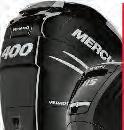








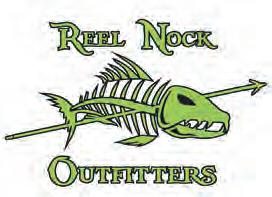










As Spring gives way to summer we anglers find ourselves sharing the waterways with more and more pleasure boaters and personal watercraft. School is out and many families make their way to the water for skiing, tubing, and joy riding. As the days become longer and our waterways become more crowded being mindful of a few simple safety rules can ensure everyone has an enjoyable outing free from harm-And citations!
1.Wear your kill switch! On April 1, 2021 a federal law took effect mandating the use of an emergency engine shut off switch by the operator of any vessel under 26’ in length while the vessel is on plane. These devices are normally referred to as “kill switches” in the boating world and could most likely save more lives every year than any other marine device-aside from life jackets. The kill switch is usually connected to the boat’s driver by a red coiled cord with a clip on the end. The clip is attached to some portion of the driver’s clothing or body and the other end is attached to the emergency kill switch device located at the boat’s key switch. If the driver falls overboard or is knocked away from the helm the lanyard tugs on the switch and the engine is shut off. There is NO EXCUSE for not utilizing this simple safety feature at all times regardless of the legal implications.

2.Use your Navigation Lights! During summer we inevitably find ourselves milking the days for all their worth and returning to dock at or after sunset. The US Coast Guard requires vessels under 39.4’ in length to display red and green forward facing navigation lights spanning 112.5 degrees and a 360 degree white light. Details further explaining these light requirements can be found on the US Coast Guard website and through any simple Google search. Failure to properly display these night time navigation lights probably contributes to more boat accidents than any other single

cause. It is imperative that before hauling the boat to the lake, river, or bay this summer you ensure that your navigation lights work as they should regardless of whether you plan to be out after dark or not.


3.Wear your life jacket! If there’s one rule related to boating that almost everyone knows it’s the requirement for everyone on board to have a properly sized life jacket. For some reason though; more boating citations are written each summer for not following this rule than any other. Without a doubt; more lives could be saved every year by boaters WEARING their life vests than any other simple act. We all feel like we could tread water or swim well enough to save ourselves in the event we fall overboard but we fail to take into account the shock of hitting the water unexpectedly while quite likely disoriented. (the way we would be in the event of a boat accident) Lots of companies now offer inflatable life vests that are much more comfortable and less confining to wear. These vests inflate automatically when submerged in water. To be noted though, these vests ONLY count as life preservers by law when being worn. Regardless of what style you choose, WEAR YOUR LIFE JACKET!
4.Use common courtesy! Summer time waterways are a great place to be. The memories that can be made boating, skiing, and tubing are amazing and unforgettable. With more and more people enjoying the water each year though; we all would be well served to exercise more patience and common courtesy for our fellow boaters. Being mindful of others while loading and unloading at boat ramps, watching for kayakers and paddle boarders, and remembering that we’re responsible for the effects of our boat wake are all easy ways we can help ensure that we and everyone around us has a safe and enjoyable summer on the water!
Let’s grow with Florida together.














Confessions of a Fishaholic, by Thatch Maguire, is a hilarious and irreverent look at one man’s quest to catch fish in spite of life’s annoying interferences. You’ll travel with this awkward adventurer as he risks home and health to pursue his passion for fishing...regardless of the consequences. Anglers of all expertise levels will immediately identify with why his addiction is incurable. This book defines the blurred line between passion and obsession.



Last year, results of a threeyear study indicated a shocking presence of drugs found in bone sh of the Florida Keys. It comes as little surprise that Florida International University (FIU) and Bone sh & Tarpon Trust (BTT) have recently completed a year-long study that also discovered pharmaceutical contaminants in the blood and other tissues of red sh in Florida waters.
“ e results underscore the urgent need to modernize Florida’s wastewater treatment systems,” said BTT President and CEO Jim McDu e. “Humanbased contaminants like these pose a signi cant threat to Florida’s recreational shery, which has an annual economic impact of $13.9 billion and directly supports more than 120,000 jobs.”
Scientists and volunteer guides and anglers sampled red sh in nine of Florida’s most important estuaries: Pensacola, Apalachicola, Cedar Key, Tampa Bay, Charlotte Harbor, Florida Bay, Northern Indian River Lagoon (IRL), St. Augustine and Jacksonville.

Similar to results of the previous bone sh study, pharmaceuticals were found in all of the estuaries sampled, with an average number of 2.1 drugs per sh and a maximum of ve. Only seven out of the 113 sampled sh had zero drugs in their system. On average, 25.7 percent of the sh exceeded a level of pharmaceuticals considered safe, which equates to one-third of the therapeutic levels in humans.
“ ese studies of bone sh and red sh are the rst to document the concerning presence of pharmaceuticals in species that are important to Florida’s recreational sheries,” said Dr. Jennifer Rehage, FIU professor and the study’s lead researcher. “Given the impacts of many of these pharmaceuticals on other sh species and the types of pharmaceuticals found, we are concerned about the role pharmaceuticals play in the health of our sheries. We will continue this work to get more answers to these concerning questions.”
Cardiovascular medications, opioid pain relievers and psychoactive medications were most commonly detected. e antiarrhythmic medication ecainide and the opioid pain reliever tramadol were detected in over 50 percent of the red sh. e antipsychotic medication upentixol was detected above safe levels in one in ve of the red sh samples. ese are very concerning levels of exposure for red sh.
Approximately ve billion prescriptions are lled each year in the U.S., yet there are no environmental regulations for the production nor disposal of pharmaceuticals worldwide. Pharmaceutical contaminants originate most o en from human wastewater and are not su ciently removed by conventional water treatment. ey remain active at low doses, can be released constantly, and exposure can a ect all aspects of sh behavior, with negative consequences for their reproduction and survival. Pharmaceutical contaminants have been shown to a ect all aspects of the life of sh, including their feeding, activity, sociability, and migratory behavior.
“Florida is a leader in addressing water quality issues and wastewater infrastructure, including converting septic systems to sewage treatment,” said Kellie Ralston, BTT’s Vice President for Conservation and Public Policy. “ e results of this study indicate that there are additional opportunities for improvement by retro tting existing wastewater treatment plants with innovative technologies, like ozone treatment, to remove pharmaceuticals and requiring such technology on new wastewater facilities.”
For more information, go to www.bone shtarpontrust.org.

Maguire’s frst work is a compelling, fast read. His style is like a mix of Hemingway with a sardonic blend of Hunter S. Thompson. I couldn’t put it down...
Ben Martin Editor in Chief Coastal Angler Magazine






































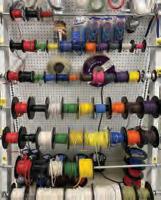















The ninth annual Lion sh Festival is slated for May 20-21 at AJ’s Seafood and Oyster Bar and HarborWalk Village in Destin, Fla. is outdoor event is free, open to the public and will feature family-friendly activities, art, diving and marine conservation booths, live music, llet demonstrations, and the world’s largest lion sh tournament, the Emerald Coast Open.
TOURNAMENT DETAILS
e Emerald Coast Open will run May 1920 and include categories for most lion sh, largest lion sh and smallest lion sh with nearly $100,000 worth of prizes up for grabs. For o cial tournament rules and registration instructions, visit EmeraldCoastOpen. com.


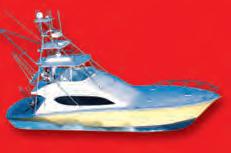
LIONFISH RESTAURANT WEEK
Sample lion sh at one of Destin–Fort Walton Beach’s featured restaurants during the Emerald Coast Open Lion sh Restaurant Week. Local chefs will highlight lion sh in unique dishes in the week leading up to the event to help bring awareness to the lion sh invasion in the Gulf of Mexico.
Schedule:
• e Boathouse Landing, Valparaiso – May 12
• e Harbor Tavern – May 13

• Dewey Destin’s Harborside – May 14
• Crab Trap Destin – May 15
• La Paz – May 16
• Harbor Docks – May 17
• Brotula’s Seafood House & Steamer – May 18

• AJ’s Seafood & Oyster Bar– May 20
e 2023 Lion sh Challenge is a summer-long tournament open to everyone and completely free to enter. Participants in last year’s Challenge reached a signi cant milestone of over 1 million lion sh harvested from Florida waters since the program began in 2014! Visit FWCReefRangers. com to register for the Lion sh Challenge.

Tesoro spinning reels feature a carbonite high-output DFD drag system with Cal’s drag grease that puts out over 55-pounds of fsh stopping power. Built with strength and protection in mind, Tesoro features an IPX-7 full-body waterproof design and proprietary ALUMILITE body, side plate and rotor. With an interchangeable screw-in handle system and fve models from 8000 to 20000 size, Tesoro spinning reels are sure to complement any big game saltwater arsenal.

okumafshingusa.com





Lasting 2-3 times longer than wooden, concrete, and aluminum docks, our modular foating system is the preferred dock choice for residential, commercial, marina, liesure, and other applications. Customizable and confgurable for boat docks, liesure and recreation docks, and drive-on jet ski and personal watercraft!



•High-quality plastic
•Environmentally-friendly

•Guaranteed for 20 years
•Near-zero maintenance
•Completely customizable
•UV and pollution resistant
The permit spawning season closure inside the Special Permit Zone (SPZ) began April 1. Regular permit regulations in the SPZ will reopen Aug. 1.
is closure area includes all state and federal waters south of Cape Sable on the Gulf coast and south of Cape Florida on the Atlantic coast including all of the Florida Keys and Biscayne Bay south of Rickenbacker Causeway.
During the open season, regulations within the SPZ allow a daily bag limit of one permit, with a vessel limit of two permit and a minimum size of 22 inches fork length.





For more information, go to MyFWC.com.








Anglers shing from a vessel targeting reef sh in Florida state waters are now required to have on board a descending device or venting tool that is rigged and ready for use. is new regulation went into e ect April 1, and also requires use of a descending device or venting tool if a sh exhibits signs of barotrauma prior to release.

e FWC approved this rule to increase survival of released reef sh, a top priority management issue in both the Gulf of Mexico and south Atlantic. As reef sh are reeled up from depth, they can su er pressure related injuries known as barotrauma. ese injuries include the stomach protruding out of the mouth, bulging eyes, bloated belly, distended intestines and inability to swim down independently. If not treated correctly, barotrauma can be lethal to sh.

“Florida’s anglers have always played an important role in the health of our sheries and the proper use of barotrauma mitigation tools is just one way anglers continue helping to conserve Florida’s sheries for current and future generations,” said FWC’s Jessica McCawley. “ is new rule not only improves survival of released reef sh but also provides anglers the exibility of choosing the best tool that ts their situation on the water.”
For more information, go to MyFWC.com.

Nestled on six lush tropical acres of pristine waterfront directly on the Indian River Lagoon, take a step back in time to experience the very best of Old Florida charm with modern conveniences and services to make your stay truly memorable and unforgettable.
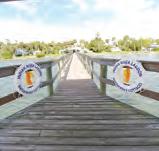


• FULLY FURNISHED 3 ROOM COTTAGES WITH FULLY EQUIPPED KITCHENS

Kingfsh Lodge includes a wide screenTV and bar for small gatherings

Sailfsh House features a wide covered wrap-around porch for larger groups
• Boat Trailer Parking on site w/ Water and Power
• 250 Foot Dock w/ Covered Area
• FREE Ice / FREE Guest Dockage
• Cable TV, Hi-Speed Internet

• 2 miles to the Ft. Pierce Inlet
• 12 miles to the Gulf Stream
• Laundry, BBQ Grilles and FREE use of our Kayaks





3011 N. Indian River Dr., Ft. Pierce, FL 34946 www.indianriverlagoonwaterfrontcottages.com



Reservations and Information: (772) 349-2206
Would your kid be proud to set a new world record?
Of course they would, and right now is a great time for kids to catch a world record thanks to the International Game Fish Association’s new length-record category for young anglers. e category is intended to promote catch-and-release by making it possible to measure a sh for world-record consideration without killing it, and right now there 169 vacant species just waiting for anglers under 16 years old to set a new world record.
e new IGFA All-Tackle Length Junior category follows the same rules and regulations as the current All-Tackle Length record categories. e All-Tackle Length Junior category will have one record available for each eligible species, with no di erentiation made for the angler’s gender, which is consistent with current All-Tackle Length and All-Tackle Length Fly record categories. Vacancies exist for all eligible species of the All-Tackle Length record category and will follow the same minimum length requirements already established.

“By introducing the All-Tackle Length Junior category, we hope to inspire the next generation of anglers to get out and sh, while promoting ethical and sustainable shing practices,” said IGFA President Jason Schratwieser. “Fishing is a fantastic way to connect with the outdoors, and we believe that by engaging young people with this sport, we can inspire the next generation of stewards of our oceans, lakes, and rivers and help ensure the long-term health and vitality of our aquatic resources.”
With children and teenagers increasingly disconnected from the outdoors, the IGFA hopes to inspire a new wave of young anglers who are passionate about the sport and its role in connecting people to nature.

For more information, go to www.igfa.org.



Across the country, bass are either in their post spawn patterns right now or they will be soon. ere is a plethora of ways to catch these bass, but my all-time favorite for getting bit and drawing in a big one is a hollow body popping frog.
A popping frog can be used as an incredible search bait, and you can duplicate many di erent bait sh depending on where you throw it and what color you tie on. ere are many di erent options out there. I try to duplicate the bait sh forage in the particular lake I’m shing. Sometimes I use a frog to imitate a bluegill, and sometimes I throw a shad color pattern. 13 Fishing makes an incredible popping frog that comes with a stout hook and a wide variety of colors for any scenario.
When I throw a frog as a search bait, I work it faster than most. Cover as much water as possible until you put a pattern together on what exactly the sh are focusing on. at’s the magic of a frog; you can literally throw it around everything! Docks, lay downs, grass and open water are just a few of the targets I look for. Once you locate a group of sh or put a pattern together, slow down and pick them o a little slower. I have noticed sometimes there isn’t a “too fast” while working a popping frog.
A couple things I look for this time of year are bass guarding fry and also sh roaming the banks feeding on bluegill. is is very predictable and an awesome way to catch big ones. Typically, if you know a few areas where the sh previously spawned, these patterns will occur in the same areas. I throw a bluegill pattern popping frog because bluegill chase bass fry, and that drives bass crazy.
Another pattern to watch for is a shad spawn. is occurs in the mornings and evenings and can lead to a bunch of sh in a hurry. Look
for birds feeding on banks while running down the lake. Find the birds and you nd the bait! A white popping frog or a bait sh color is typically my choice in this situation.
A popping frog can work all year long, but it really drives post spawn sh crazy. Who doesn’t like catching sh on a topwater with heavy line and a heavy rod?


Frog Fishing Gear
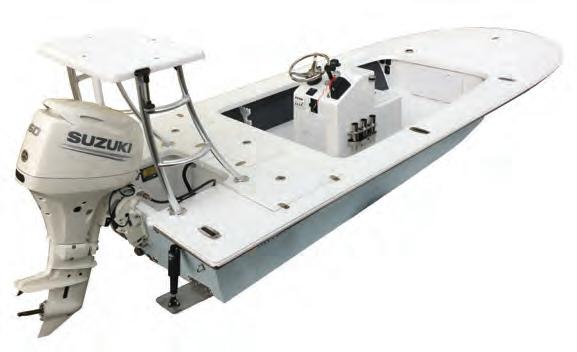

Heavy gear is needed for setting those big frog hooks and shing around heavy cover. I sh a 13 Fishing 7’4H Omen Black rod paired with a Concept A 8.3 reel spooled up with Seaguar 50-pound Smackdown braid. is setup allows you to get sh out of heavy cover and into the boat!
Tyler Woolcott is a professional tournament angler and guide. Check out his website at www.tylerwoolcott shing.com.


Coastal Angler and The Angler Magazine, Suzuki Marine and Sea Eagle have come together to offer readers a shot at this Sea Eagle FishSkiff 16 paired with a Suzuki DF4 outboard that’ll take you wherever the fsh are. The FishSkiff 16 is an infatable fshing boat that is lightweight, sturdy, stable and extremely packable. It rolls up small enough to ft in the trunk of a car and quickly infates into a fshing machine. Powered by Suzuki’s four-stroke DF4A, you’ll have to hold on to your hat as you scream over the fats. Designed for effciency and performance and portability, the DF4A provides all the speed and acceleration you can handle. It’s lightweight and can be attached or removed with ease.






Black sea bass o en y under the radar for anglers o the coast of the Southeast. Perhaps it’s because their size and numbers are thickest in the middle of winter, when it’s not as pleasant to be on the water? Or maybe it’s because they don’t grow as a large as the other grouper species that inhabit our wrecks and reefs?
This 40.76-pound northern pike is a new Idaho state record. It beat the existing 13-year-old record by a little more than half a pound.
Avid pike sherman omas Francis landed the monster sh on March 21 from Hayden Lake in northern Idaho. e sh was more than 4 feet long, with an o cial length of 49 inches and an impressive girth of 26.5 inches.

Francis told Idaho Fish and Game he speci cally targets big pike almost every day. In late March, ice still ringed the banks at Hayden Lake, so Francis was casting his lure up to the edge of the ice.
“When my lure hit the water, I let it sink all the way to the bottom,” he said. “As soon as my lure hit the bottom, I felt her hit. I sh with 80-poundtest line, and she almost immediately started peeling drag, a lot of it.

“She pinned herself to the bottom and just kept going, peeling drag the whole time,” he continued. “I knew that wasn’t normal, and I could tell it was something special.”
e IGFA all-tackle world record northern pike was caught in Germany in 1986. It weighed 55 pounds, 1-ounce.
For more information, go to https://idfg.idaho.gov



Whatever the reason, there’s no denying that black sea bass are some of the tastiest critters in the ocean, and anchoring over a wreck or reef teeming with them can ll a cooler in short order. Just ask the folks up in New England, where the species is a highly sought a er target of anglers.
NOAA recently announced that recreational harvest of black sea bass will again be open year-round for the 2023-2024 season in federal waters of the South Atlantic, south of Cape Hatteras, North Carolina. So, sharpen the hooks on your chicken rigs and go collect some meat.

NOAA Fisheries has projected that the 2023-2024 recreational catch limit of 366,510 pounds whole weight will not be met. e season in federal waters will run from April 1, 2023, to March 31, 2024. Seasons in state waters vary, so be sure to check state regulations where you plan to sh. In federal waters of the Atlantic, south of 35 deg 15.0321’ N, there is a seven sh per person bag limit with a 13-inch minimum size limit.
A descending device is required on board all vessels shing for or possessing snapper and grouper species in federal waters of the South Atlantic. e descending device must be readily available for use and attached to at least 16 ounces of weight and at least 60 feet of line. For more information, go to coastalanglermag.com.

Here’s a memorable beach moment: You’re basking in the warm sun, toes in the sand, letting the gentle turn of the foam-capped waves lull you into a state of complete relaxation. As your eyes scan the endless horizon of blue on blue, you’re rewarded with a school of dolphins making their way across the sea. There’s no denying their signature shape as they leap from the water. If you don’t see anything else extraordinary the rest of the day, you can take solace knowing you’ve witnessed one of nature’s most playful and intelligent creatures in their natural habitat.
Why not re-create that special toes-in-the-sand moment with our Blue Topaz Dolphin Pendant? The beloved sea mammal has been captured mid-jump in sterling silver. And, tucked into its fins is a full two carats of shimmering blue topaz.

Nothing captures the shimmering color of the ocean in the midday sun like blue topaz. With its sparkling clear blue color and high refractive index, blue topaz is one of the top-selling blue gemstones. And with our special price, you have quite the catch.






Satisfaction guaranteed or your money back. Enjoy the Blue Topaz Dolphin Pendant for 30 days. If it doesn’t pass the test swimmingly, send it back for a full refund of the item price.
Limited Reserves. A full two carats of genuine blue topaz set in sterling silver for this price is as rare as a dolphin sighting. We cannot guarantee availability for long. Call today!
“Enormously
“This sterling silver dolphin is absolutely beautiful and the blue topaz is like the color of the ocean”
— Vivian, Cabool, MO
popular, significantly intelligent and scientifically sophisticated, dolphins are amidst the most beloved animals among people.” — Dolphins-World êêêêê


If you are big trout enthusiast like me, you know there is still some time le if you haven’t had your ll over the past ve months. December through a portion of May is when I set my eyes on catching a personnel best speckled trout. With the full moon on May 3 this year, I feel the entire month will hold promise to land one full of eggs before the rst full moon in June. May is also a little more enjoyable, too, so sit back and let me tell you why.
Most anglers in Texas think about big trout mid-December through early April, and when the waders come o they change their focus. Fortunately, not all the big girls have dropped their eggs yet and will still hold them into May. It gives us the opportunity for a heavy trout to take a big smiling photo with.

Speaking of taking the waders o , wading in May is typically warm and enjoyable even if the sh don’t cooperate. e pleasant temperatures are more appealing than dreary, cold, winter days, and they also allow me to sh the way I prefer. At times in winter, we must slow down our presentation and this can become a little monotonous; however, targeting big trout in the warmth of May allows us to work the lure more aggressively.
ere is not much more exciting than a topwater explosion, and spring is one of my favorite times to utilize this tactic for trophy trout. May is also a great time to throw other lures. Traditional slow-sinking and suspending lures also work wonders this time of year.
As most of you know, I am a paddletail fanatic! is month, I’ll give several sizes a shot at getting inhaled by a huge yellow mouth. ese large predators will take 3-, 4- and 5-inch lures this time of year. As their bodies warm with the water, they become as aggressive as they will be all year, so adding some rattling sound to your tails can really get the sh active.
I seek out areas of grass ats in knee- to waist-deep water. Finding a at with a drain from a small lake or creek will work wonders for concentrating sh over adjacent shallow grass. A depression along such a at is another area you should target. When choosing a at with these criteria, areas of potholes are a plus over a solid grass- lled at.

I hope these tips help you get your PB trout on your last chance of the year to nd one lled with eggs. Take a kid shing. ey like big trout too. And be safe. May is the uno cial start of summer, and inexperienced boaters will be on the water.



 Capt. Michael Okruhlik is the inventor of Knockin Tail Lures®, and the owner of www.MyCoastOutdoors.com.
Capt. Michael Okruhlik is the inventor of Knockin Tail Lures®, and the owner of www.MyCoastOutdoors.com.







An angler got a little more than he bargained for in early April while shing for walleye in the Upper White River in northwestern Arkansas. Fishing 12-pound-test line and a 3-inch-long crankbait, Robert Murphy accidentally snagged a 102-pound paddle sh and spent the next hour battling the sh from his kayak.

In April, the Upper White experiences spring runs of several species into the riverine sections of Beaver Lake, including white bass, walleye and paddle sh. Paddle sh, also known as spoonbill, are a large zooplankton eating species. ey won’t chase lures or live bait, so anglers typically “snag” them during Arkansas’ paddle sh snagging season. e daily limit is two sh per person.

Murphy might not have intended to snag a paddle sh, but that’s exactly what he did. According to Outdoor Life, Murphy was throwing a 3-inch Berkley Flicker Shad for walleye when he saw a big sh on his sonar. inking it was a big striped bass or a gar, he ran his 10- to 12-foot-diving plug through the area and hooked his river monster in the top of the tail.
Anyone who has ever foul-hoked a sh knows how hard they ght when you can’t turn their head. Well, Murphy spent the next hour battling the beast from his kayak as it pulled him up and down the river. A er he nally hauled it into his kayak and brought it to shore, he weighed and measured the sh. With a length of 71.5 inches, it was nearly 6 feet long, and at 102 pounds, it was shy of the 118-pound, 9-ounce state record that was caught from Beaver Lake in 2020.
For more information, see www.agfc.com.

